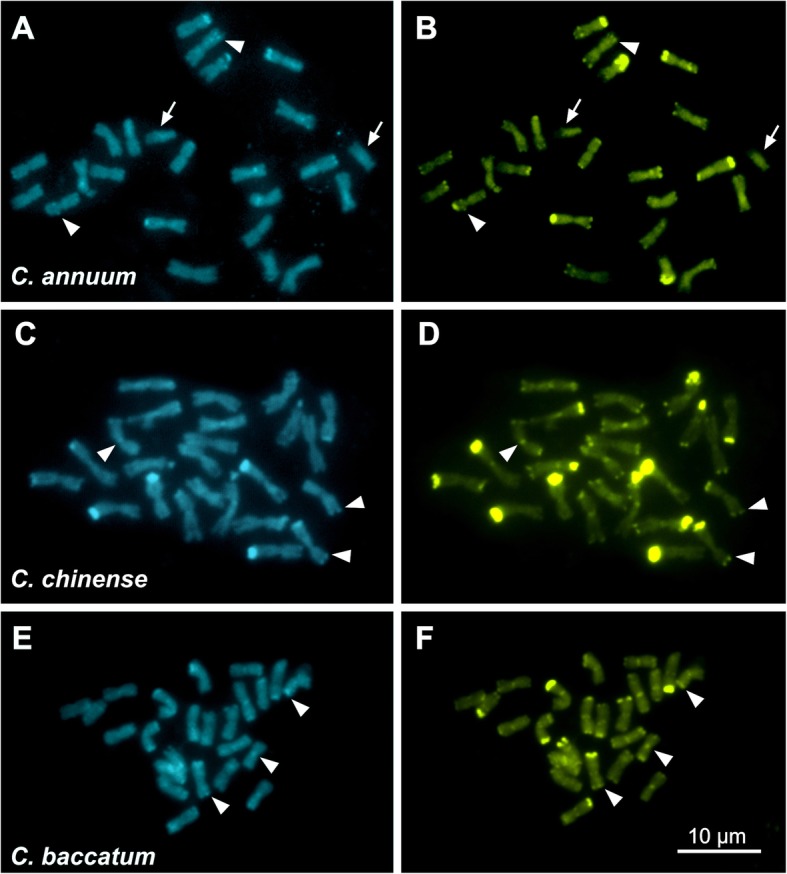Fig. 5.

Capsicum species show considerable diversity in the C-CMA/DAPI banding profiles. Observe that C. annuum presents four chromosomes without fluorescent signals. C-DAPI interstitial dots was detected in three chromosome pairs and terminal bands two pairs (a), all of them were co-located with C-CMA bands. Ten pairs exhibit C-CMA signals, being three pairs with stronger terminal and the other as the terminal to subterminal small signals (b). Capsicum chinense showed four pairs with strongest DAPI signals, besides minor centromeric, interstitial and terminal signals on a few chromosomes (c), while C-CMA bands were observed in all the chromosomes, varying as strongest terminal bands in seven pairs, minor centromeric bands in six pairs and as terminal and interstitial dots in ten pairs (d). Some of these bands have been evidenced by DAPI and CMA3 (c, d). Observe that C. baccatum exhibits six pairs with minor terminal and six with centromeric and/or interstitial C-DAPI (e). C-CMA signals were detected in four pairs as strongest terminal bands, but minor terminal bands were observed in all chromosomes, as well as minor centromeric in almost all the chromosomes (f). The bar represents 10 μm
